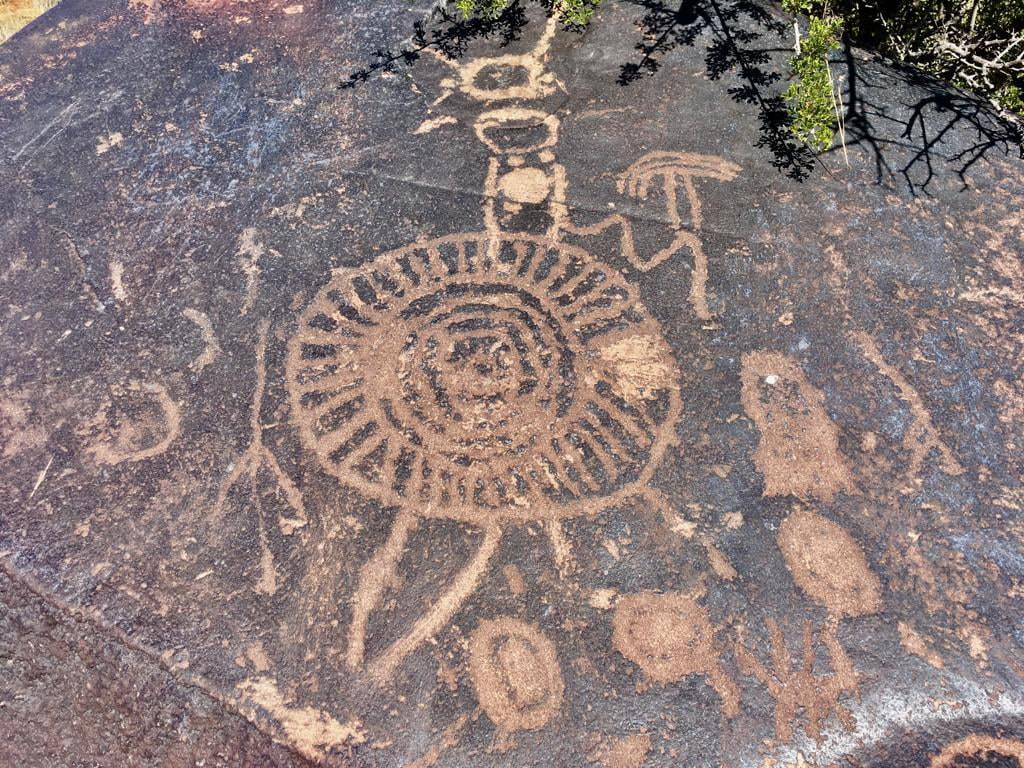
The Karoo is so ancient you will hear the past whispering everywhere. If you listen, you can hear the soft cadence of long-gone voices in the wind; people who once moved through this harsh environment, blending their colours with the landscape like paintings on the ageless rocks.
Investigating people of the Karoo’s past may take you back as far as the Stone Age; somehow in those most ancient days, they managed a system of survival, leaving the marks of their lives in the dust of a vanished era. Slowly, over the years, we have been able to unwind this tapestry to reveal layers of habitation, culture and endurance.
The San/Khoikhoi/Bushmen/Hottentot/Khoisan
A plethora of small peoples habited the Karoo until the late 19th century. Nomadic hunter-gatherers called the San, they lived as their Stone Age ancestors had, making their homes under rocky outcrops and in sheltered valleys, often with extraordinary views of the landscapes they called home.
- A splinter group of the San who became more settled and were the first pastoralists in southern Africa, brought a new way of life to the San, who were hunter-gatherers as opposed to herders. This led to misunderstandings and subsequent conflict between the two groups. These descendants of the Stone Age people differed basically in their cultures and lifestyles: the Hottentots herding sheep and cattle in the age-old pastoral pattern, and the Bushmen following their traditional nomadic pursuits of hunting and feasting.
- European settlers first encountered these disparate tribes in the late 17th century, and as the Dutch slowly encroached on their land, the Khoisan as they later became known, were dispossessed, exterminated, or enslaved, and their numbers dwindled. Initially, the pastoralists were referred to as ‘Hottentots’ by European settlers because the sound of their language was so different, consisting of a series of clicks rather than words, and unpronounceable from a European point of view. The Khoisan languages, characterised by implosive consonants or ‘clicks’, belonged to a totally different language family from those of the Bantu speakers.
- The Hottentots kept herds of animals such as goat, cattle and sheep, and had to keep moving to find enough grazing land for their animals. They moved according to the seasons and only stayed in one place for a few weeks. This meant that they had to be able to carry all their belongings themselves, or load them onto the backs of their animals. Houses therefore had to be very light and easy to erect and take apart. For this reason they were made of thin poles covered with reed mats. Even pots and buckets were made of wood with small handles to make them easier to tie to animals’ backs. They also wore clothes made of leather, like their San ancestors.
- The animals, especially cattle, were a sign of wealth and the Hottentots only ate cattle that had died or had been stolen from their enemies. They would kill their own animals only on important occasions like funerals or weddings. The women milked the animals and gathered wild plants from the veld, while the men killed game for everyday food, developing a survival strategy that combined both hunter-gatherer and herder lifestyles.
Rock art
Images of rhinos, eland, elephant and wildebeest, along with people and abstract geometric shapes, are to be found on sun-baked dolerite rock outcrops throughout the Karoo where the ancient San engravers left their last mark.
These ancient engravers lived in a time of relative peace and quiet. The great herds that roamed the plains of this arid land provided food and gave them spiritual inspiration.
Their descendants, however, found themselves in a bitter frontier war that they ultimately lost against the newly arrived colonists.
Rock art in the Karoo often takes the form of paintings in sandstone overhangs, but most of the engravings are done on sun-darkened dolerite. There are many theories about this work, but modern interpretations indicate that the rock art of the Karoo was not narrative nor descriptive. It had a deeper meaning, linked with trance rituals. The rock face became nothing more than a veil between the spirit world and this one.
The trekboers
When the first settlers and explorers pushed their ox wagons over the mountains of the Cedarberg, the Swartruggens, the Witteberge and the Great Swartberg, they found themselves almost immediately in contact with the surviving inhabitants of the Karoo, the Hottentots and the wary Bushmen.
For close on a century the tiny Bushmen were hunted and harried until, decimated and broken, they retreated into the sandy wastes of the Kalahari to find their last refuge. And the Great Karoo became the domain of the trekboers, who wandered with their flocks in search of water and grazing.
Today, sheep and goats are the wealth of the Karoo, and the multiplication of their numbers on the plains is the basis for most agricultural and commercial activity in the region. The meat, fleeces, hair and hides of these animals provided the developing railways across the area with goods for trade in the latter years of the nineteenth century.
Still today, we have the descendants of these earlier peoples in the form of the ‘Karretjie People’ (Donkey Cart People) of the Great Karoo, remnants of the vanished San/Hottentot/Bushmen. Today, as itinerant sheep-shearers, the ‘Karretjie People’ roam the vast arid expanses of the Karoo in their donkey carts in search of a possible shearing opportunities, listening to the great singing of the stars at night, just as their ancestors did.
Heuningland: African & Karoo tours to stir the heart and lift the soul
We are proudly South African and have a fervent love of the Great Karoo, its people and its unique vegetation and animals. We are passionate conservationists of nature and would like to share our knowledge acquired through years of travel and touring experience. We are therefore able to offer custom-designed and distinctively different tour options:
- Hiking/camping trails or guided self-driving tours through the ancient landscape of the Karoo.
- Tailor-made safaris to any destination in South Africa, Namibia, Zimbabwe, Zambia, Mozambique, and Botswana.
Find out more at: heuningland.com




